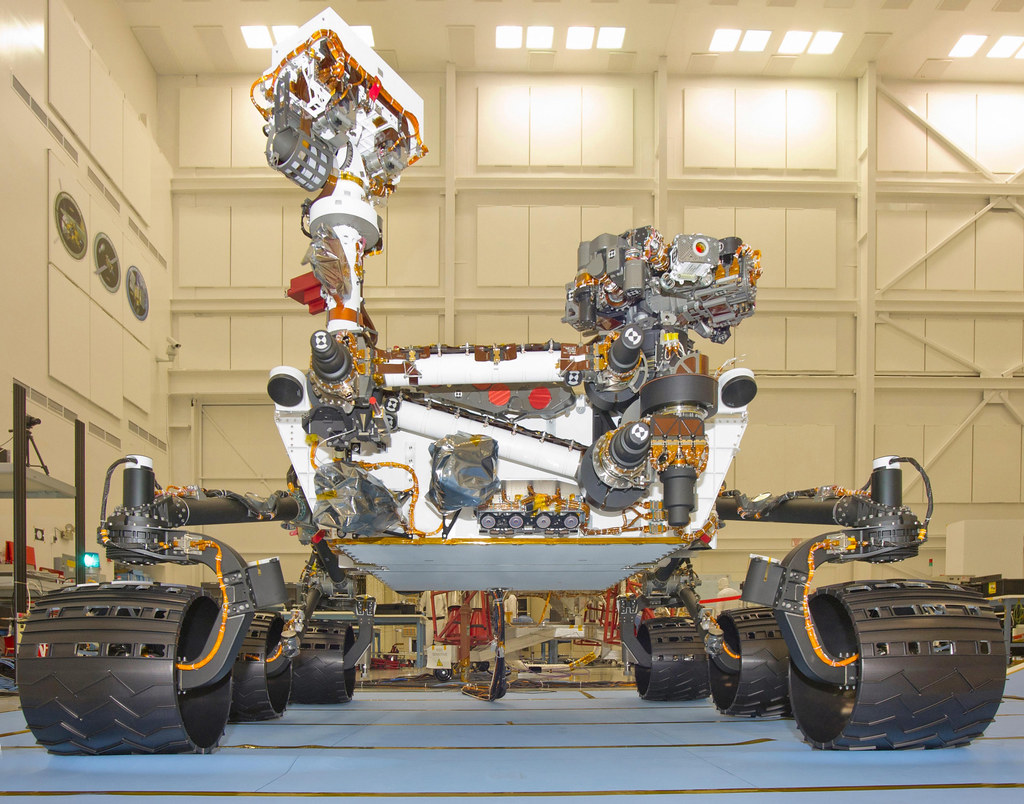Mission Update: Summary of Activities on Sols 3921-3922
Curiosity Rover, NASA’s Mars Science Laboratory, has been cruising through the Martian landscape, exploring various geologic targets. On Sol 3921, the rover positioned itself at the transition between lighter and darker-toned materials, presenting a plethora of intriguing targets for further investigation. Among these are dark-toned float rocks, bedrock near the contact between the sulfate unit and upper Gediz Vallis Ridge, and a cluster of texturally-diverse boulders.
To make the most of the available opportunities, the team decided to split their contact science time and perform two APXS integrations on separate targets. The first target, named “Kamenianoi,” is a dark-toned float rock, believed to have tumbled down from the upper Gediz Vallis Ridge. The second target, “Eleftheroupoli,” is dusty bedrock near the contact. Both targets will also be imaged by MAHLI.
In addition to the contact science activities, there are several remote sensing investigations planned for Sol 3921. This includes Navcam line-of-sight observations, Mastcam imaging of various targets such as laminated bedrock (“Aegina”), dark-toned blocks (“Ano Potamia”), and clasts (“Kalavryton”), as well as a Mastcam calibration target observation. ChemCam will also perform LIBS (Laser-Induced Breakdown Spectroscopy) on the “Aegina” target and capture a 10×1 long-distance RMI (Remote Micro-Imager) mosaic of a fractured area.
Later in Sol 3921, Curiosity will embark on a short drive to a cluster of diverse boulders that have been eagerly awaited. These boulders will be thoroughly investigated over the upcoming three-sol weekend plan. Following the drive, the rover will conduct post-drive imaging to assess its new workspace for contact science and document any clasts and soil along its traverse.
Moving on to Sol 3922, the team has planned several observations to gather important atmospheric data. These include a Mastcam basic tau measurement to determine the optical depth of the atmosphere, as well as an observation of the line-of-sight extinction of the crater rim to assess dust in the atmosphere. Additionally, post-drive ChemCam AEGIS (Autonomous Exploration for Gathering Increased Science) will be performed, along with a Navcam dust devil movie and a Mastcam sky survey.
As Curiosity continues its journey towards the Gediz Vallis Ridge in the coming sols, there is no shortage of fantastic targets to study along the way. The rover’s mission to unravel the mysteries of Mars’ geology and atmosphere continues to captivate scientists and space enthusiasts alike.
For more information on the latest Mars news and updates, visit MarsDaily.com, your go-to source for all things related to the Red Planet. And don’t forget to stay tuned for more exciting discoveries from Curiosity and other missions exploring our fascinating universe.






